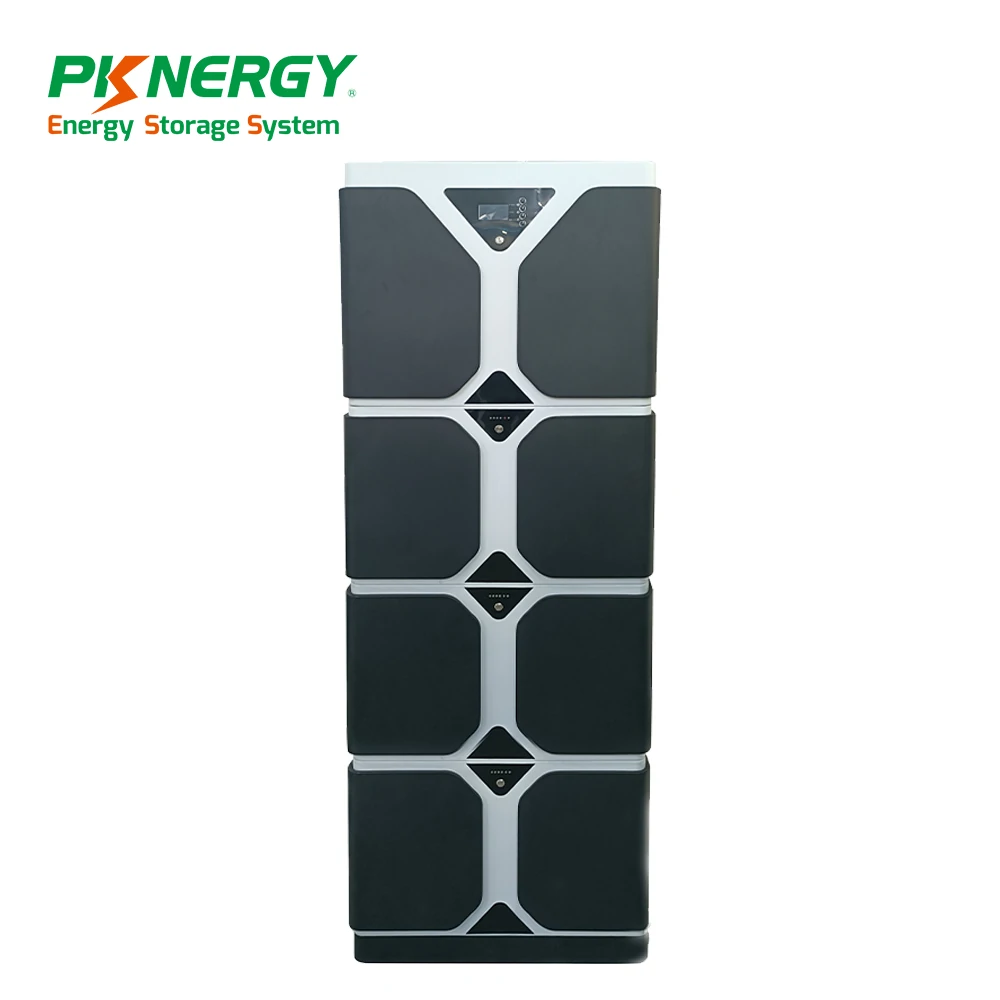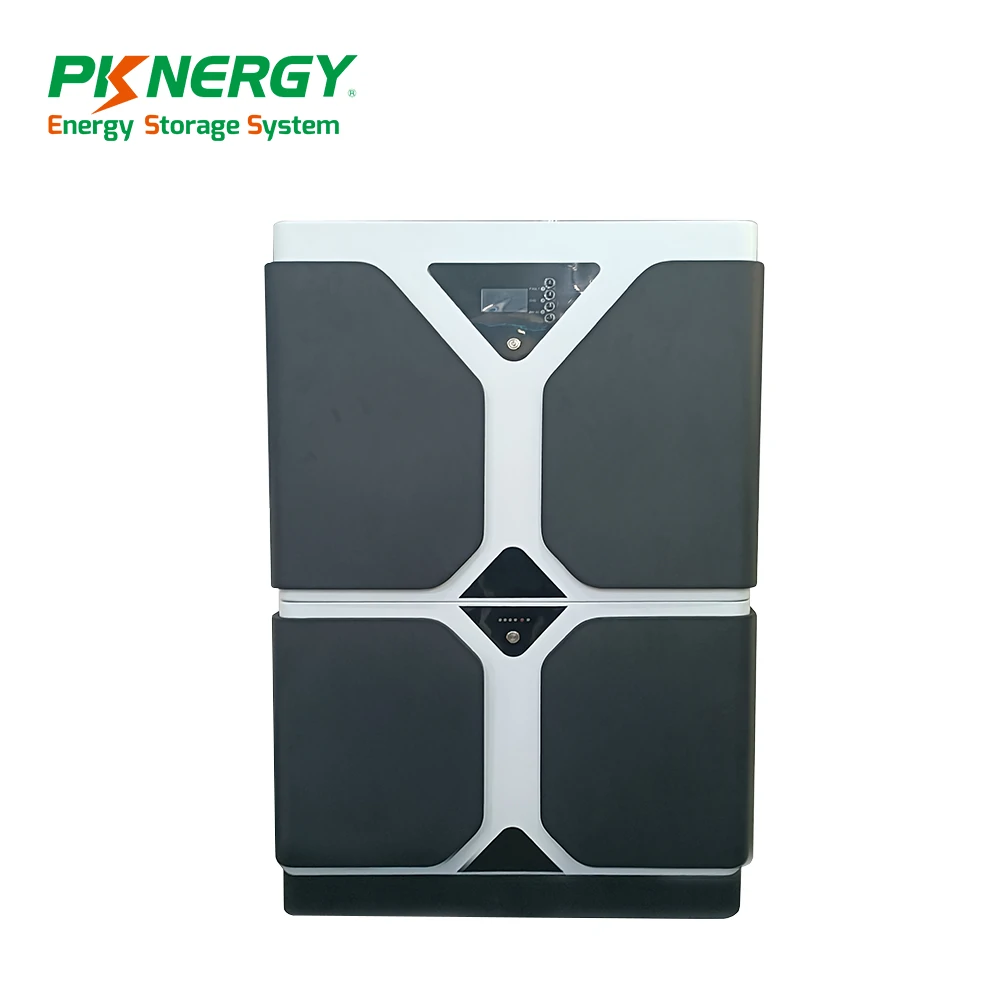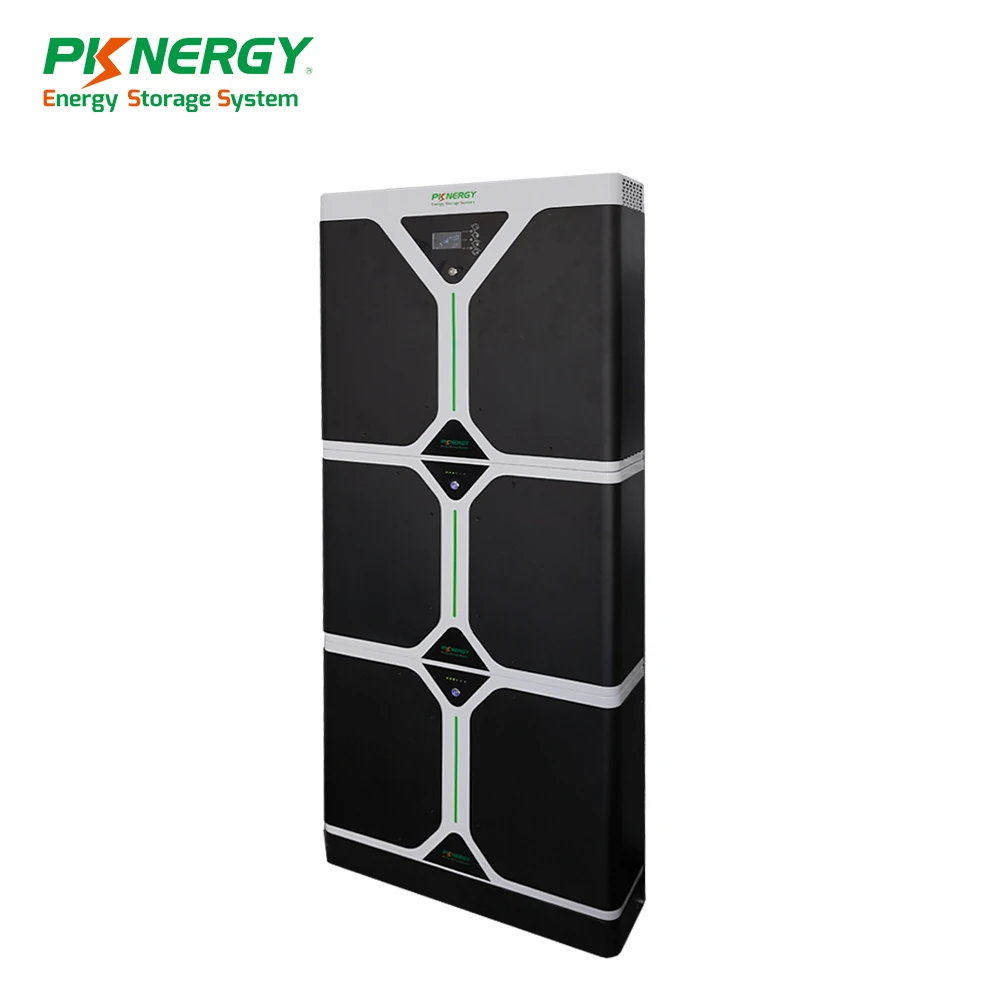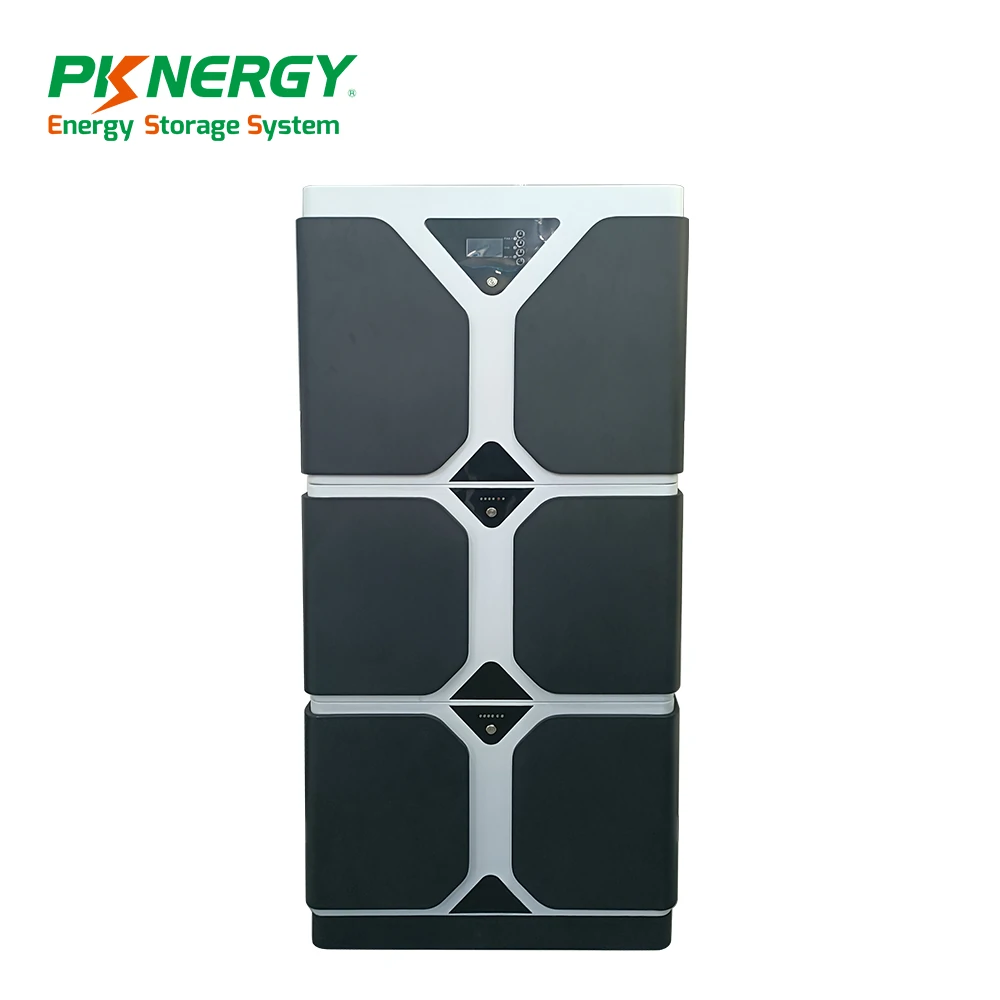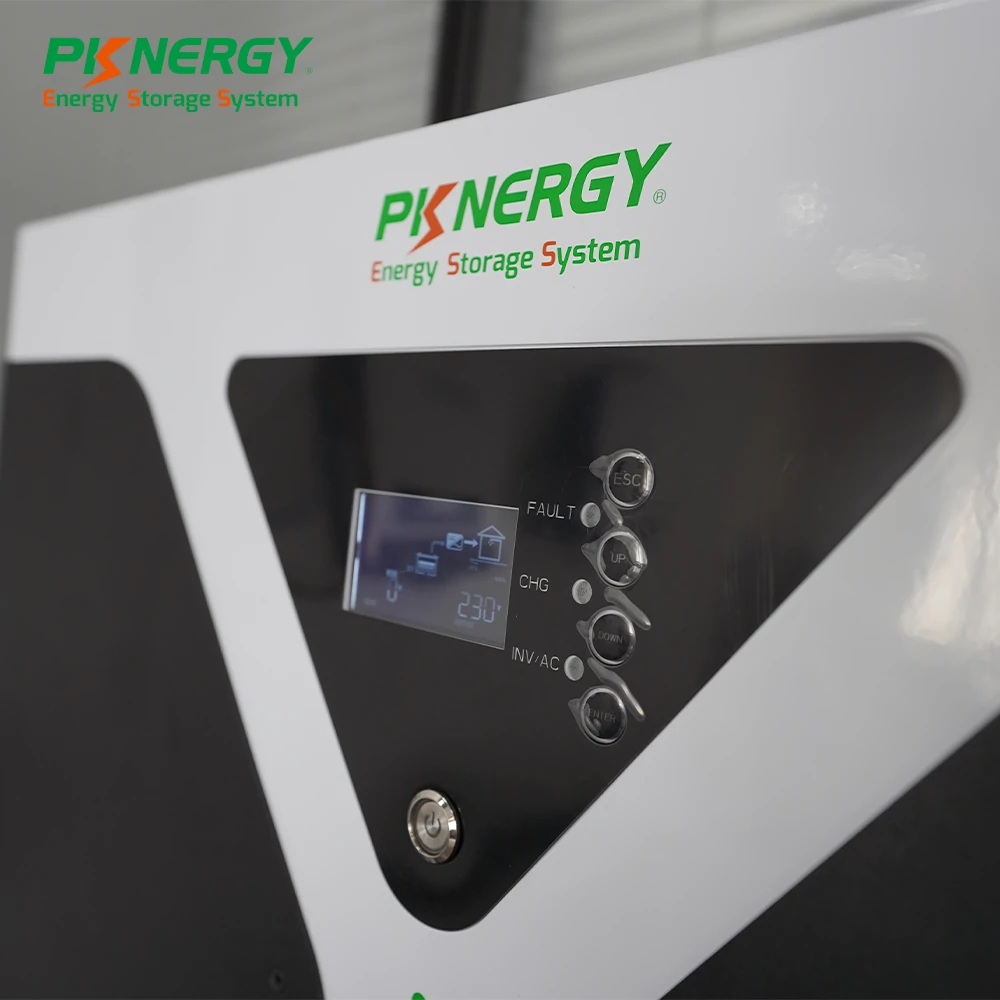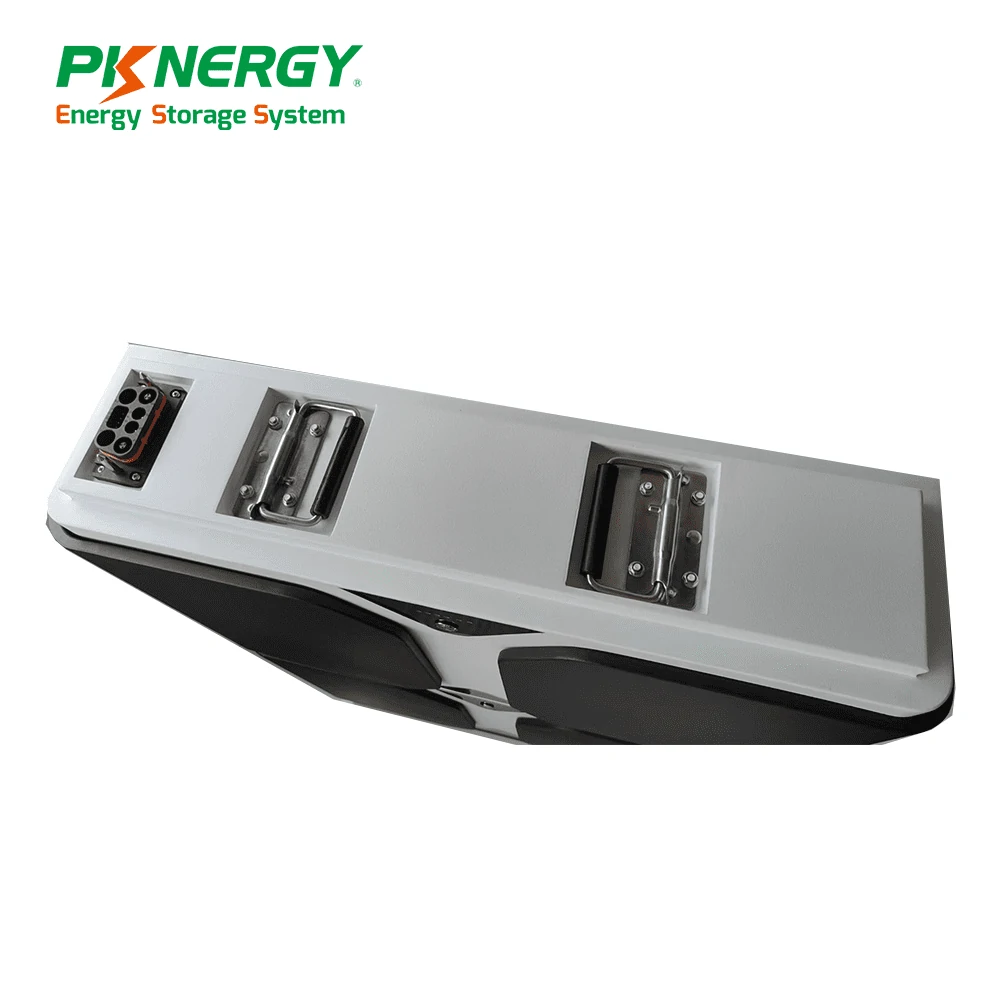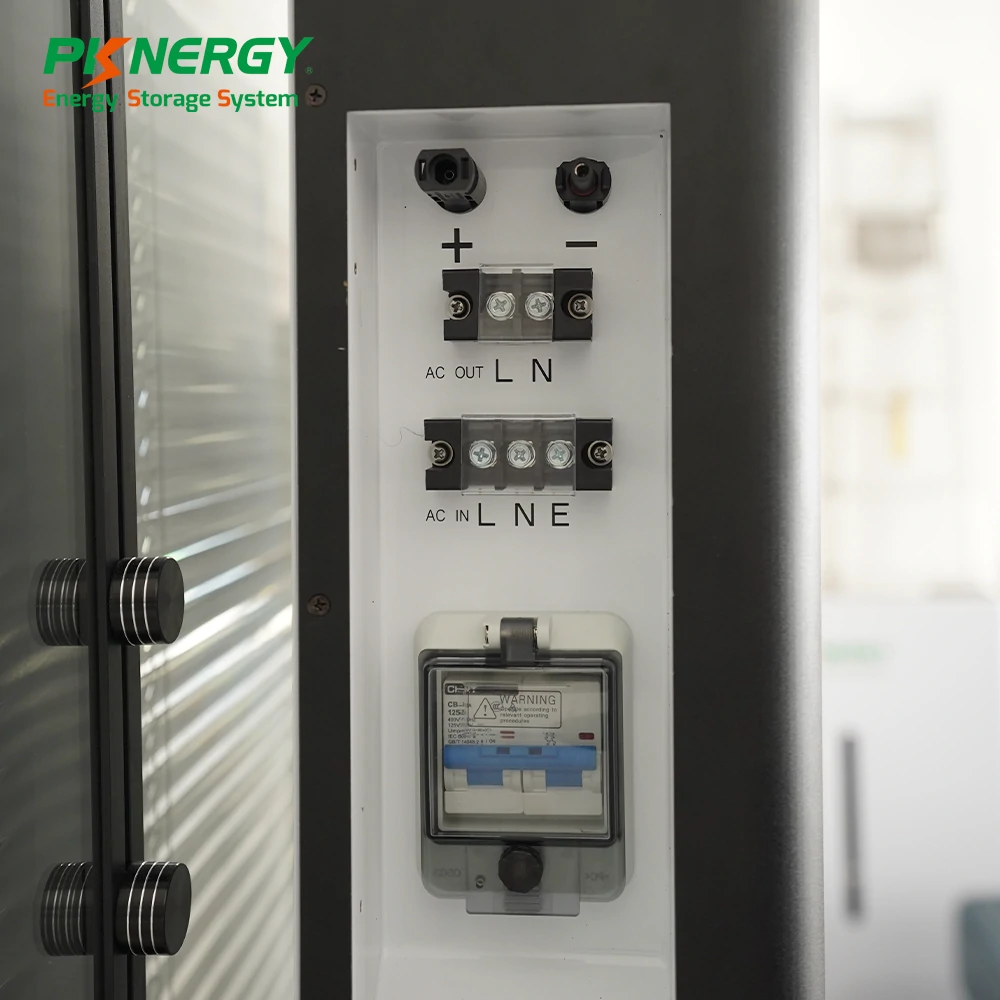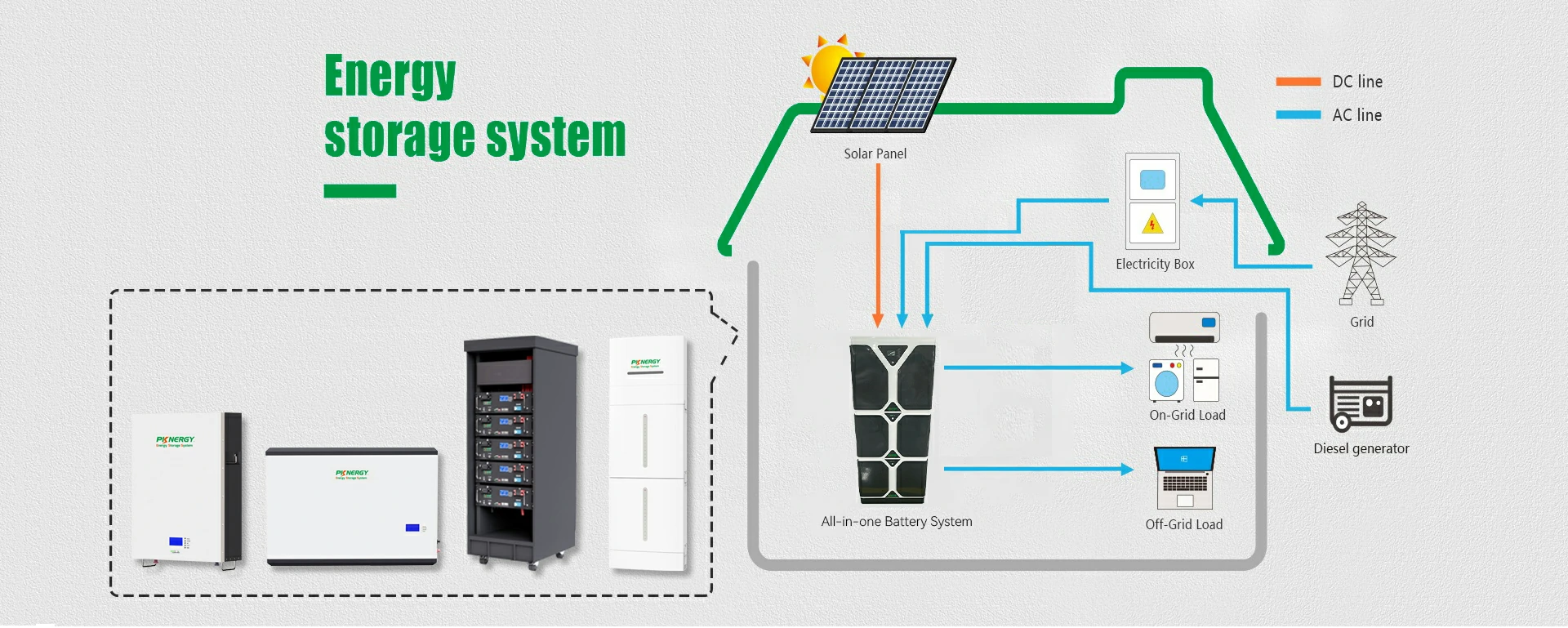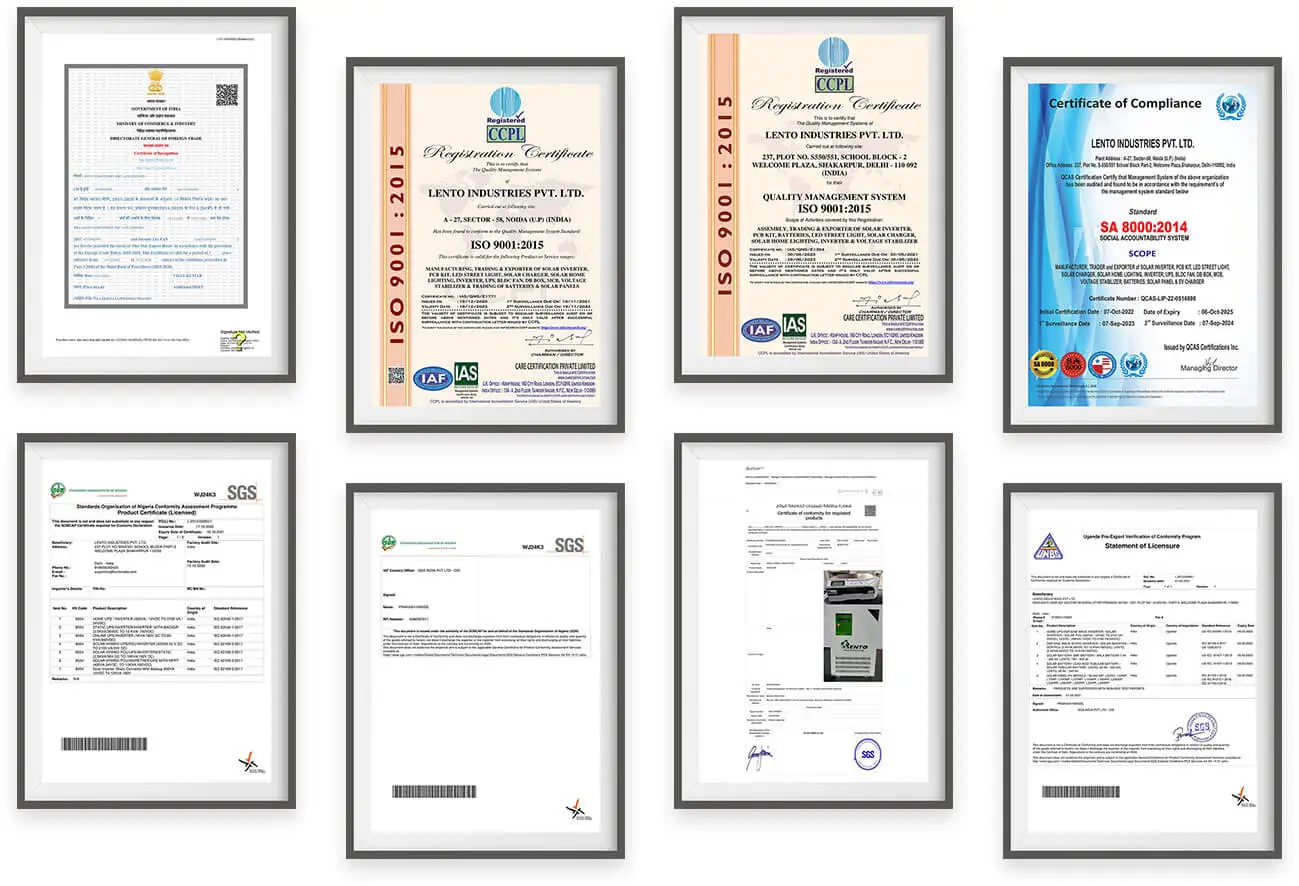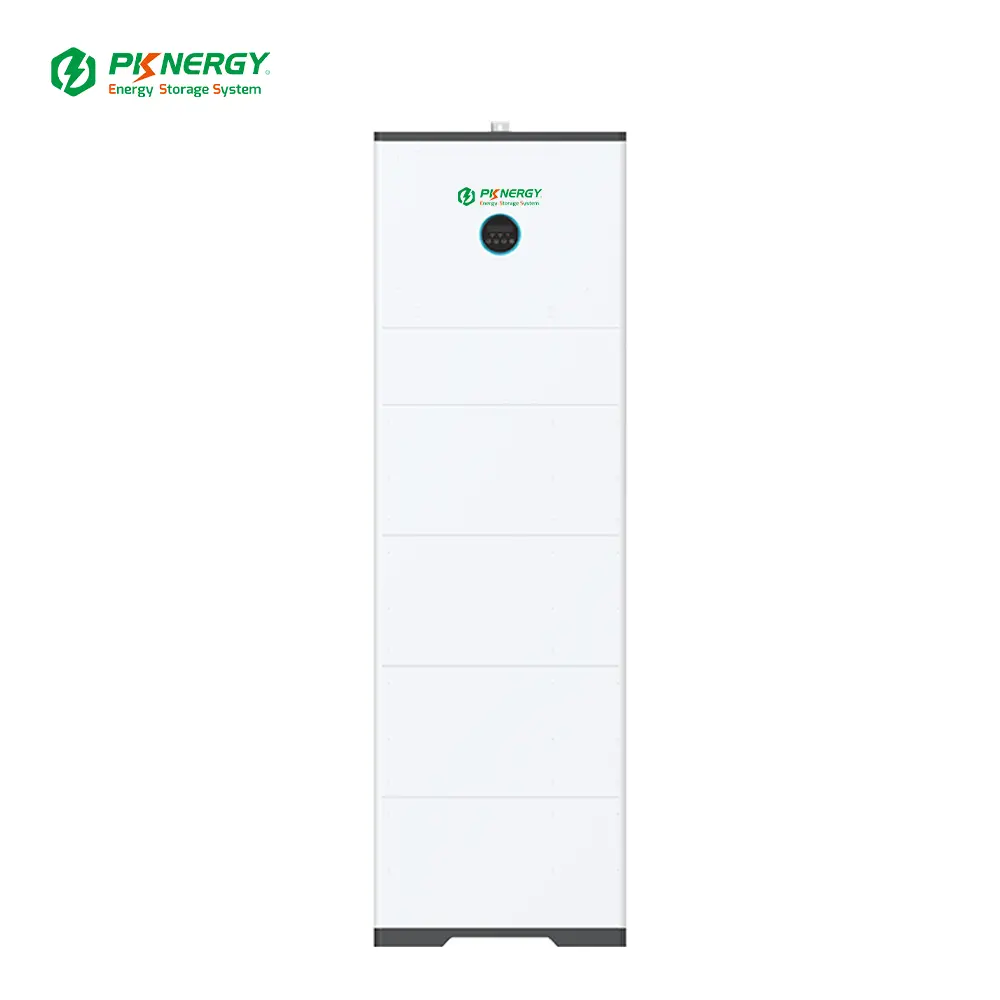
≥15 Years(25℃)Design Life
Intergrated BMS Overall Protection
●≥7000cycles@25℃, 90% DOD, 60%EOL
●expanded from 5kWh to 15kWh
● Saves 50% of Installation Space
Product Features
Improved Safety, BMS Protection
And up to 300A discharge capability
Can be expanded from 5kWh to 15kWh
Extended Warranty Up to 15 years
Exceptional lifespan of Up to 7000 Cycles
Real-time monitoring System and remote Debug
Compatible with most inverters on the market
Non-Toxic & Non-Hazardous Cobalt-Free LFP Chemistry
Charge:-10℃~50℃;Discharge:-20℃-50℃
Certification: CE, UN38.3, MSDS,IEC/ISO9001/ISO1400
Applications
Battery Pack Specifications
-
Figuresof Unit 1Battery
| Battery Type | LiFePO4 battery | ||
| Battery voltage | 51.2V | ||
| Charge Voltage | 57.6V | ||
| Discharge Cut-off Voltage | 43.2V | ||
| Rated Capacity | 100Ah | 200Ah | 300Ah |
| Storage Power | 5KWh | 10KWh | 15KWh |
| Max. charge current | 100A | ||
| Max. discharge current | 100A | ||
| Max. charge power | 6600W | ||
| Max.discharge power | 6600W | ||
- Specification
| Dimensions(W*H*D) | 630*982*205mm | 630*1315*205mm | 630*1648*205mm |
| Weight | ≤85kg | ≤135kg | ≤185kg |
| Mounting method | Wall-mounting bracket | ||
| Topology(Solar/Battery) | Transformerless/Transformerless | ||
| Degree of protection | IP65 | ||
| Operating ambient temperature | Charge:0~55℃/Discharge: -20~55℃ | ||
| Allowable relative humidity | 0~ 100% | ||
| Cooling method | Natural convection | ||
| Max. operating altitude | 4000m | ||
| Display | LED indicator | ||
- PVInput Specification
| Recommend max.PV input | 13000 Wp |
| Max. PV input voltage | 600V |
| Min.operating PV voltage | 40V |
| Start-up input voltage | 50V |
| Rated PV input voltage | 360V |
| No.of independent MPPT | 2 |
| Default No. of PV strings per | 1 |
| Max. PV input current | 16A |
| Max.DC short-circuit current | 20A |
- ACInput Specification
| Max. AC input power from grid | 13000 VA |
| Rated AC output power | 6000 W |
| Max. AC output power | 6000 VA |
| Rated AC output current
(at 230V) |
26. 1 A |
| Max. AC output current | 27.3 A |
| Rated AC voltage | 220V/230V/240V |
| AC voltage range | 154V~276V |
| Rated grid frequency | 50Hz/60Hz |
| Grid frequency range | 45~55Hz/55~65Hz |
| Harmonic(THD) | <3% |
| Power factor at rated power | >0.99 |
| Adjustable power factor | adj.0.8.overexcited/leading to 0.8 |
| Grid Type | Single phase |
- Efficiency
| Max. efficiency | 97.70% |
| European efficiency | 97.30% |
- ProtectionFunction
| Gird monitoring | Yes |
| DC reverse polarity protection | Yes |
| AC short circuit protection | Yes |
| Leakage current protection | Yes |
| Surge Protection | DC type I I /AC type II |
| DC swith(PV) | Yes |
| DC fuse(battery) | Yes |
| Battery input reverse polarity | Yes |
- Off-gridmodel
| Rated voltage | 220V/230V/240V(±2%) |
| Frequency range | 50Hz/60Hz(±0.5%) |
| Total output THDV for liner | ≤2% |
| Switch time to emergency | ≤10 ms |
| Rated output power | 6000 W /6000 VA |
| Peak output power | 8400 VA, 10s |
- BackupData
| Rated output power for backup | 6000 W |
| Rated output current for backup | 27A |
How to Choose the Best 10KW Off-Grid Solar System for Your Home
Are you considering installing an off-grid solar system at your place? With electricity costs on the rise in recent years, off-grid solar represents an excellent way to cut energy expenses and reduce dependence on the utility grid.
In remote areas, setting up a 10kw off-grid solar system might even be more cost-effective than expanding the grid, a reason why local governments are boosting home energy storage systems with various tax incentives. But how do you select the finest off-grid solar setup for your abode?
Let’s delve into the key factors you should consider when choosing a 10kw off-grid solar system for your home, helping you make the best decision tailored to your needs.
Assessing Your Power Needs
Before picking a 10kw off-grid solar system, it’s crucial to determine your household’s power requirements. Consider your daily energy consumption and the type of solar batteries you plan to use for energy storage.
Your solar batteries should match your daily load and provide enough capacity for any anticipated future power needs. If you’re on a budget, prioritize the energy needs for lighting, appliances, electronics, and heating and cooling.
Choosing the Right Battery Type
When assessing your power needs, it’s also vital to consider the type of solar batteries you’ll use. Lead-acid batteries are commonly used in off-grid systems, though newer, more efficient lithium-ion batteries are also available.
Lead-acid batteries are generally more affordable but require regular maintenance and replacement, and have a shorter lifespan. Consequently, they are being replaced by longer-lasting and safer LiFePo4 batteries.
Selecting a Suitable Inverter
Moreover, the compatibility between your batteries and the inverter is essential. A mismatch can lead to various issues affecting the performance and lifespan of your entire off-grid solar system, such as:
- Reduced efficiency if the inverter’s capacity is less than the storage capability of the batteries.
- System overload if the inverter’s maximum power output is less than what the batteries can provide, which could lead to inverter damage under high-power loads.
- Battery damage if the inverter doesn’t manage the charging and discharging correctly, potentially leading to overcharging or deep discharging, shortening the battery’s lifespan.
- Safety risks from a mismatched inverter and batteries could increase the likelihood of failures, such as overheating, fires, or other electrical issues.
- Economic loss due to the frequent replacement of damaged equipment and the inability to effectively utilize the invested solar system.
- System instability, if the inverter and batteries are mismatched, could lead to unreliable power supply and affect power quality.
To avoid these issues, inverter selection should be based on the type, capacity, and voltage of the batteries, ensuring efficient, stable, and safe operation of the system.
Alternatively, you might consider the all-in-one battery produced by Pknergy, a modular battery system that lets you freely assemble the battery capacity you need for your home. This product includes an inverter, reducing installation area and time while avoiding the issues caused by mismatched inverters and batteries.
Besides assessing current power needs, consider potential backup energy sources for emergencies. If faced with a crisis, consider whether you should have a generator on standby to extend your home’s energy supply.
Lastly, consider the environmental impact of your off-grid power system. Off-grid setups eliminate the need for grid electricity, reducing your reliance on fossil fuels and overall carbon footprint. With a 10kw off-grid solar system, you can also harness renewable sources like solar and wind energy, further lessening environmental impact.
How to Choose the Best 10KW Off-Grid Solar System for Your Home
Are you considering installing an off-grid solar system at your place? With electricity costs on the rise in recent years, off-grid solar represents an excellent way to cut energy expenses and reduce dependence on the utility grid. In remote areas, setting up a 10kw off-grid solar system might even be more cost-effective than expanding the grid, a reason why local governments are boosting home energy storage systems with various tax incentives. But how do you select the finest off-grid solar setup for your abode? Let's delve into the key factors you should consider when choosing a 10kw off-grid solar system for your home, helping you make the best decision tailored to your needs.
Assessing Your Power Needs
Before picking a 10kw off-grid solar system, it's crucial to determine your household's power requirements. Consider your daily energy consumption and the type of solar batteries you plan to use for energy storage. Your solar batteries should match your daily load and provide enough capacity for any anticipated future power needs. If you're on a budget, prioritize the energy needs for lighting, appliances, electronics, and heating and cooling.Choosing the Right Battery Type
When assessing your power needs, it's also vital to consider the type of solar batteries you'll use. Lead-acid batteries are commonly used in off-grid systems, though newer, more efficient lithium-ion batteries are also available. Lead-acid batteries are generally more affordable but require regular maintenance and replacement, and have a shorter lifespan. Consequently, they are being replaced by longer-lasting and safer LiFePo4 batteries.Selecting a Suitable Inverter
Moreover, the compatibility between your batteries and the inverter is essential. A mismatch can lead to various issues affecting the performance and lifespan of your entire off-grid solar system, such as: Reduced efficiency if the inverter's capacity is less than the storage capability of the batteries. System overload if the inverter's maximum power output is less than what the batteries can provide, which could lead to inverter damage under high-power loads. Battery damage if the inverter doesn't manage the charging and discharging correctly, potentially leading to overcharging or deep discharging, shortening the battery's lifespan. Safety risks from a mismatched inverter and batteries could increase the likelihood of failures, such as overheating, fires, or other electrical issues. Economic loss due to the frequent replacement of damaged equipment and the inability to effectively utilize the invested solar system. System instability, if the inverter and batteries are mismatched, could lead to unreliable power supply and affect power quality. To avoid these issues, inverter selection should be based on the type, capacity, and voltage of the batteries, ensuring efficient, stable, and safe operation of the system. Alternatively, you might consider the all-in-one battery produced by Pknergy, a modular battery system that lets you freely assemble the battery capacity you need for your home. This product includes an inverter, reducing installation area and time while avoiding the issues caused by mismatched inverters and batteries. Besides assessing current power needs, consider potential backup energy sources for emergencies. If faced with a crisis, consider whether you should have a generator on standby to extend your home's energy supply. Lastly, consider the environmental impact of your off-grid power system. Off-grid setups eliminate the need for grid electricity, reducing your reliance on fossil fuels and overall carbon footprint. With a 10kw off-grid solar system, you can also harness renewable sources like solar and wind energy, further lessening environmental impact.FAQs
Q
What is an all-in-one Energy Storage Battery System?
A
An all-in-one battery system is a device that combines multiple components of a battery storage system, like the battery cells, inverter, and management system, into a single integrated unit.
Q
What are the advantages of using an all-in-one Energy Storage System?
A
All-in-one battery systems offer energy cost savings, backup power during outages, increased energy independence, and reduced carbon footprint.
Q
Can I connect an all-in-one battery system to solar panels?
A
Yes, many all-in-one battery systems are designed to work seamlessly with solar panels, allowing you to store excess solar energy for later use.
Related Products

Why PKNERGY
Quality Control
Created the Safest & More Environmentally Future for Your Family
While focusing on research and development, we also pay attention to quality. ISO9001 certification in 1999, ISO14001 certification in 2004, OHSAS18001 and ISO45001 in 2016, IATF16949 certification in the same year; “National Integrated Management System” in 2018; ISO13485 certification in 2020, related products can provide GB, CE, UN, UL and other international certification.
Save Money, Protect Environment
PKNERGY helps you reduce your energy bills for your home solar energy storage, store your solar energy for use anytime- at night or during an outage.

